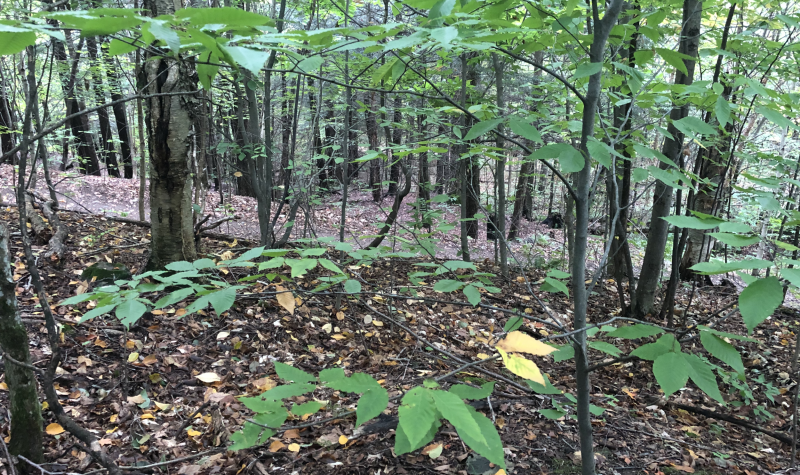Citizens group Protection Mont-Gale and conservation organization Appalachian Corridor have succeeded in protecting 34.7 acres of a 40-acre high ecological value forest in Bromont’s Mont Gale area. This piece of land is now protected in perpetuity and it marks one of the last major conservation efforts needed to preserve the majority of Mont Gale.
Protection Mont-Gale came together two-years ago after discovering that an agreement was signed between the former landowner, Denis Laframboise, and the Bromont municipality for the construction of a housing development, for a total of 12 new homes, and a road on the piece of land in question. With the help of Appalachian Corridor, the groups negotiated with Laframboise and the municipality to reconsider the development plan and to have a conservation project in its place.
As a result of these negotiations, only a small parcel of the 40-acre land will be used for the construction of a maximum of four houses, while the most ecologically sensitive areas are protected from future development. Protection Mont-Gale will now also serve as the stewards of the land and citizens will be able to experience Mont Gale exactly as it is, now and in the future.
“It’s still hard to believe. We went back to the forest and then we realized that nothing will ever change, that’s quite impressive. I would say we are proud of the entire group, what we achieved, and the way that we did it,” said Stéphanie Latour, spokesperson for Protection Mont Gale.
As the new stewards of the land, Protection Mont Gale hopes to see other people get involved. Mélanie Lelièvre, director of Appalachian Corridor, noted that the organization will be working side-by-side with Protection Mont Gale to protect the land.
“The community is used of working the trails that are already there, so we will be able to enjoy it as we are able to enjoy it today. The other part, I think it’s a new adventure for everyone. As Mélanie [Lelièvre] always mentioned to me, it’s the beginning of something else once it’s preserved. We hope that all the citizens will take part in the stewardship that is going to happen because this is what is going to happen next,” mentioned Latour.
“It’s going to be protected forever so we will do our homework related to that. We will make sure this forest is maintained the way it is, that it’s well preserved, that the natural habitats are maintained. We will make some visits and make sure that the trails that are already there are correctly designed,” added Lelièvre. “Maybe this summer we will work on the trails to make sure they aren’t presenting any threats to the fragile plant population. We will work with Protection Mont Gale to have them as stewards of the land and be sure they are our ears and eyes on that property.”
As one of the regions in Quebec with the highest number of conservation projects on the go, it was essential for Appalachian Corridor to get involved in order to continue its work in protecting the natural landscapes that the Eastern Townships is known for. There are many reasons why this particular part of Mont Gale is of high ecological value, according to Lelièvre, including the fact that it is one of nine mountains located in the Monteregian Hills.
“The Monteregian Hills has been recognized as a priority for conservation because they offer specific conditions for soil and forests that grow there. Plus, the Mont Brome Range (which it is a part of) is within a large, unfragmented, forest core that has been identified by Appalachian Corridor,” she explained. “(…) Within this specific forest we found old growth, so very large trees and old trees. It is surrounded by other protected properties. Three sides of this land is surrounded by other conservation projects. As well, we found many threatened species, like plants and amphibians, that are present and that are rare. For all of these reasons we had to protect it and it was really worth it.”
Protection Mont Gale and Appalachian Corridor’s initiative didn’t come without its challenges, but they made it happen with the help of the community’s support and its financial partners.
“Since the value of the property was so high it was not eligible for public grants, that was a major problem. (…) We looked at the possibility to let go of a parcel of land, in which the promoter could maintain housing development on that part of the project, while keeping the major sensitive areas and the main acreage of the property so that the value could be less and be eligible for a conservation project,” noted Lelièvre “(…) We signed the agreement and we moved on with the funding of this property. The citizens had to raise close to $400,000 and they did it.”
Listen to the full interview below for more information on the conservation project:


